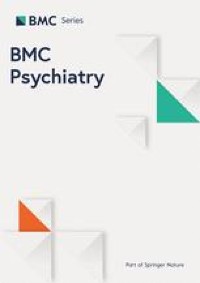Background Generally, pandemics such as COVID-19 take an enormous toll on people’s lives. As the pandemic now turns to an endemic state, growing attention has been paid to the multiple adverse mental health and behavioral issues, such as suicidal ideation and substance use. However, the interplay of suicidality and substance misuse during the pandemic has been limited. We aimed to investigate the prevalence of co-occurrence of suicide ideation, alcohol and cannabis misuse, and the factors that are associated with these co-occurrences in the province of Saskatchewan during the COVID-19 pandemic. Methods We performed a multivariable trivariate probit regression on a sample of 666 Saskatchewan adolescents and adults (16 years or older), drawn from the cycle 10 data collection (March 2022) of the Mental Health Commission of Canada, and Canadian Centre on Substance Use and Addiction (MHCC-CCSA) dataset. Results The prevalence of suicidal ideation was higher among respondents who reported both problematic cannabis and alcohol use (25.8%) than single users of alcohol (23.2%) and cannabis (18.7%). Younger respondents (16–34 years) and those who reported recent changes in other substance use were independent factors that were associated with the common experience of suicide ideation, problematic cannabis, and alcohol use. Having a diagnosis of mental health disorders either before or during the pandemic, and the perceived inability to bounce back after the pandemic (low resilience) are strong correlates of suicidal ideation. Those who lived alone, between 35 and 55 years of age were more likely to report problematic alcohol use. Those who reported changes in alternative activities, who reported pandemic stress, and declared a LGBTQIA2S + identity had higher probability of problematic cannabis use. Conclusions As the pandemic persists, improving access to suicide and substance use interventions for the vulnerable groups identified in this study may be impactful. Read More
August 8, 2023
2 min read

Background Generally, pandemics such as COVID-19 take an enormous toll on people’s lives. As the pandemic now turns to an endemic state, growing attention has been paid to the multiple adverse mental health and behavioral issues, such as suicidal ideation and substance use. However, the interplay of suicidality and substance misuse during the pandemic has been limited. We aimed to investigate the prevalence of co-occurrence of suicide ideation, alcohol and cannabis misuse, and the factors that are associated with these co-occurrences in the province of Saskatchewan during the COVID-19 pandemic. Methods We performed a multivariable trivariate probit regression on a sample of 666 Saskatchewan adolescents and adults (16 years or older), drawn from the cycle 10 data collection (March 2022) of the Mental Health Commission of Canada, and Canadian Centre on Substance Use and Addiction (MHCC-CCSA) dataset. Results The prevalence of suicidal ideation was higher among respondents who reported both problematic cannabis and alcohol use (25.8%) than single users of alcohol (23.2%) and cannabis (18.7%). Younger respondents (16–34 years) and those who reported recent changes in other substance use were independent factors that were associated with the common experience of suicide ideation, problematic cannabis, and alcohol use. Having a diagnosis of mental health disorders either before or during the pandemic, and the perceived inability to bounce back after the pandemic (low resilience) are strong correlates of suicidal ideation. Those who lived alone, between 35 and 55 years of age were more likely to report problematic alcohol use. Those who reported changes in alternative activities, who reported pandemic stress, and declared a LGBTQIA2S + identity had higher probability of problematic cannabis use. Conclusions As the pandemic persists, improving access to suicide and substance use interventions for the vulnerable groups identified in this study may be impactful.

Leave a Reply
You must be logged in to post a comment.